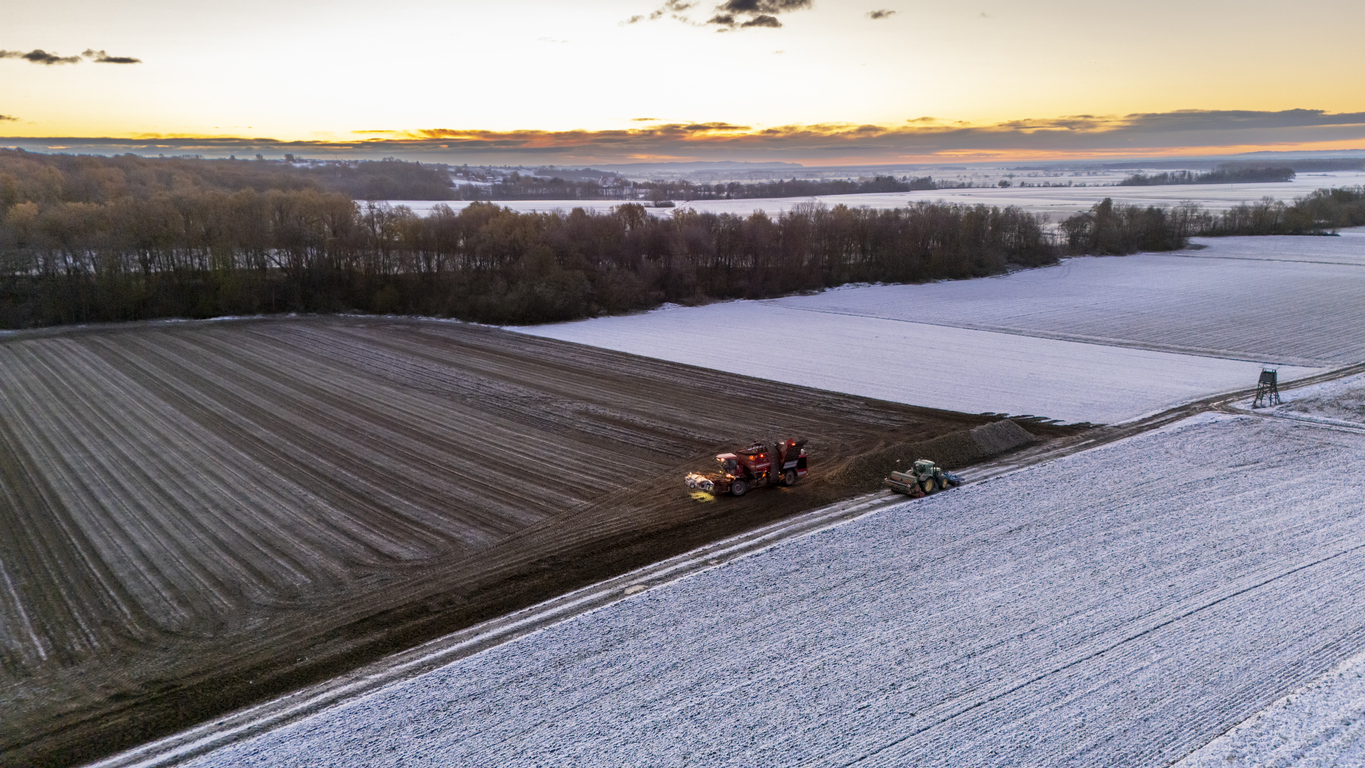By Danny Gavin, AEM Communications Coordinator —
In celebrating National Agriculture Week and National Ag Day, AEM recognizes the importance of agriculture and the role it plays in our society. What’s more, we applaud the role of farmers in helping our members develop the equipment making it possible for food to get from the fields to our tables. Learn more.
Americans are moving to rural areas in ever-increasing numbers, reflecting their increased desire to seek out more space, embrace entrepreneurial opportunities, and take advantage of a lower cost of living.
And whether their move is made to start a farm or a business, the sense of community found in these areas and – perhaps more importantly – the ability to secure a piece of property at a reasonable price, has ensured the rural migration trend is one that’s here to stay for the time being.
“There is an untapped entrepreneurial spirit associated with living in rural America,” said Mark Smither, CSO at Paulsen, a marketing agency based in Sioux Falls, South Dakota that focuses on the agricultural, manufacturing, energy, education, and rural lifestyle industries.
“We really have to be open to helping people realize those entrepreneurial dreams of building something,” Smither added.
Attitudes Toward the Rural Migration
Many workers experienced burnout during the quarantine period that followed COVID-19 pandemic, leaving them to determine whether they want to go back to commuting to work at all. Meanwhile, rural areas boast more space, and many feel that these areas are “hot” right now, explained Paulsen. And if telecommuting is an option, 66% of Americans polled in a 2021 survey conducted between Paulsen and Audience Audit say that they would consider moving to a rural home or a subdivision.
“We found that this attitude is confirmed by a lot of the things you are seeing in the news,” he said. “The idea that where we live and where we work are now decoupled.”
And, as society gravitates more toward one that favors working from home, it seems that many people feel like they will have more freedom and mobility over time.
Deciding Factors
However, one factor, internet service, would be the deciding factor for 67% of those who responded to the Paulsen and Audience Audit survey.
Ultimately, many Americans would consider making a move if there had a reliable internet connection. This is one of the biggest issues that some folks have with the rural migration. If there is no service, then many people will not be able to keep their jobs and work from home. Survey respondents also voiced some of their concerns in terms of:
- Isolation
- Employment opportunities
- Access to retail and shopping locations
Other Notable Survey Results
Approximately 56% of those surveyed expect that they will own 1-5 acres when they move, 32% expect a large backyard or prop under an acre, and 12% plan to own more than 5 acres. Meanwhile, equipment needs are rising, and people say they expect to purchase more equipment if they move to a rural area. However, there is a gap between expected property size and equipment needs to maintain their property, as sometimes ideas change, and people don’t know exactly what they’ll need.
One third of respondents, as shown below, reported that they did not care for urban or rural areas, but they just want more space. The survey found that there are approximately three attitudes that Americans have regarding location.
- 26% see themselves as “ruralists,” and they see themselves as living a rural lifestyle.
- 41% see themselves as “urbanists” who currently live in a city but would like to live in the country.
- 33% don’t identify with either, or they see themselves as space seekers who simply want more space than they have already.
Ruralists believe that their life is more beautiful than city living. They also believe that a rural lifestyle is healthier, and they feel that it could be a better place to raise children. They feel that there are more opportunities that they can impact their community, as smaller communities are closer knit and more reliable in the eyes of a ruralist.
Urbanists are city lovers, as they love the hustle of big city and all the activity going on around them. They feel that they can live near better schools, since there are many more options in the city. Some urbanists even chose to live near an airport for ease of travel.
“Urbanists tend to feel that rural residents are less connected to their communities and antiquated instead of embracing change,” said Smither.
Space seekers only defined by three or four key attitudes:
- They don’t see themselves as ruralists or urbanists.
- They want more indoor space.
- They want more outdoor space.
- They want more peace and quiet where they live.
Ultimately, this group is the least happy to be living where they currently reside.
The survey additionally showed that one third of those surveyed had already moved to a rural area in either 2020 or 2021. This trend will continue, as many urbanists surveyed expressed a desire to move to the country, and many space seekers continue their search for open areas.
What’s the Meaning Behind the Move?
Why did city dwellers move ultimately? According to Smither, “The key question is not who or where they are moving, it is why.”
Among the top reasons that survey respondents said that they moved to a rural area include:
- More land or space around home
- Fewer people
- More home for less money
- Safe environment with clean air and water
- Lower cost of living
- No traffic
- Different culture
- Living in a place with different political affiliation
“There is an untapped entrepreneurial spirit associated with living in rural America. We really have to be open to helping people realize those entrepreneurial dreams of building something.” -- Mark Smither, CSO of Paulsen
Distance and having to change jobs are not a barrier for most urban residents considering a move. COVID-19 changed many work policies and had a huge impact on America. As a result, Americans feel they have more mobility.
“When the history of coronavirus is written, one of the most dramatic narratives will be of the decline of major cities and the simultaneous revitalization of more sparsely populated areas,” said Smither.
COVID-19 has made many workers reconsider their options, as those surveyed indicated:
- 67% responded that employers changed policies about where employees can work.
- 52% said these COVID-19 policies made them consider a rural move.
The Impact Moving Forward
According to Smither, “68% of those surveyed would be open to move,” there will be many more opportunities for small communities and businesses in the future. This will no doubt have an impact on the agriculture industry.
How will it all play out moving forward? Time will tell, but as people continue to embrace rural migration, it’s critical for those impacted to gain a strong understanding of why people want to move, what they’re looking for, and how to ensure they get the most out of the experience.
For more coverage of industry trends, subscribe to the AEM Industry Advisor.





